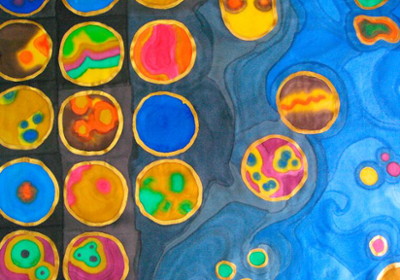
Author: Chris Palmer
 A new study led by researchers at University of Utah Health tracing the development of human sperm stem cells to mature sperm cells has yielded the most comprehensive view of this process to date. The results, published in the journal Cell Stem Cell, expand the understanding of human testis development and point to potential treatments for male infertility.
A new study led by researchers at University of Utah Health tracing the development of human sperm stem cells to mature sperm cells has yielded the most comprehensive view of this process to date. The results, published in the journal Cell Stem Cell, expand the understanding of human testis development and point to potential treatments for male infertility.
Spermatogenesis—the production of sperm cells—involves the differentiation of spermatogonial stem cells into mature sperm through a complex process. Disruptions to this process are a common cause of male infertility, which affects one in every six couples. Most of what scientists know about spermatogenesis comes from studies in mice.
A few years ago, though, Bradley Cairns, Ph.D., professor and chair of oncological sciences at U of U Health and chief academic officer at Huntsman Cancer Institute led research that used genome analysis tools to track this multistage process in human sperm stem cells. His group identified four distinct cellular phases of sperm stem cell maturation, revealing how the stem cells progress from a “quiescent” state, to a “proliferation” state during which stem cells divide, to a final “differentiation” state when stem cells mature to become sperm.
In the current study, Cairns and colleagues used single-cell RNA sequencing analysis to build an atlas of all the genes expressed in human fetal and postnatal testes. This analysis revealed that it takes just about 14 weeks after fertilization for fetal primordial germ cells, the precursors of all germ cells (including sperm cells), to transition to a cell state highly similar to the quiescent state of adult cells the researchers identified in their previous study.
“The identity of these cells is laid down early in fetal development, and is then maintained, mostly unchanged, until puberty,” says Cairns.
In addition, the researchers discovered that somatic cells responsible for producing testosterone and creating various support structures within the testis, including the seminiferous tubules where spermatogenesis takes place, derive from a common pool of undifferentiated progenitor cells at around 7 weeks post-fertilization.
“As we learn more about human testis development, our efforts to grow those cells in vitro—or in a dish—can become more sophisticated,” says lead author Jingtao Guo, Ph.D., assistant professor of surgery. “And once we develop an accurate in vitro model of this process, we can potentially grow the stem cells we’ve identified and hopefully drive their development all the way to functional sperm. That is the path toward achieving spermatogenesis in the lab as a possible treatment for infertile individuals.”
Researchers have successfully grown sperm cells from stem cells derived from mice, but replicating the process in humans has been challenging. “The [human] stem cells either die or they differentiate into somatic cells. It’s been a complete failure in the past, but we plan to use our data to explore paths forward,” Cairns says.
One notable difference in mouse and human brought to light by the researchers’ findings is that only humans exhibit an approximately eight-week gap between when cells that support the primordial germ cells differentiate and when primordial germ cells themselves transition into sperm stem cells.
“In humans, it appears that the somatic support cells differentiate first so that they can guide the primordial germ cells to further transition into sperm stem cells,” Guo says.
Cairns says that the changes that occur during this gap, and the signals sent to the stem cells by the support cells, could be critical for successfully recapitulating stem cell survival and spermatogenesis in the lab. “We need to continue studying human sperm stem cells directly and recognize the differences between mice and humans, then exploit those differences to facilitate in vitro growth of human sperm stem cells,” he says. “This study helps lay the groundwork for being able to do that kind of work.”
# # #
The research publishes as “Single-cell analysis of the developing human testis reveals somatic niche cell specification and fetal germline stem cell establishment” and was supported by the Howard Hughes Medical Institute, National Institutes of Health, SwedishChildhood Cancer Foundation, Swedish Research Council, MagnusBergvall Foundation, and the Birgitta and Carl-Axel Rydbeck research Grant for Pediatric Research.